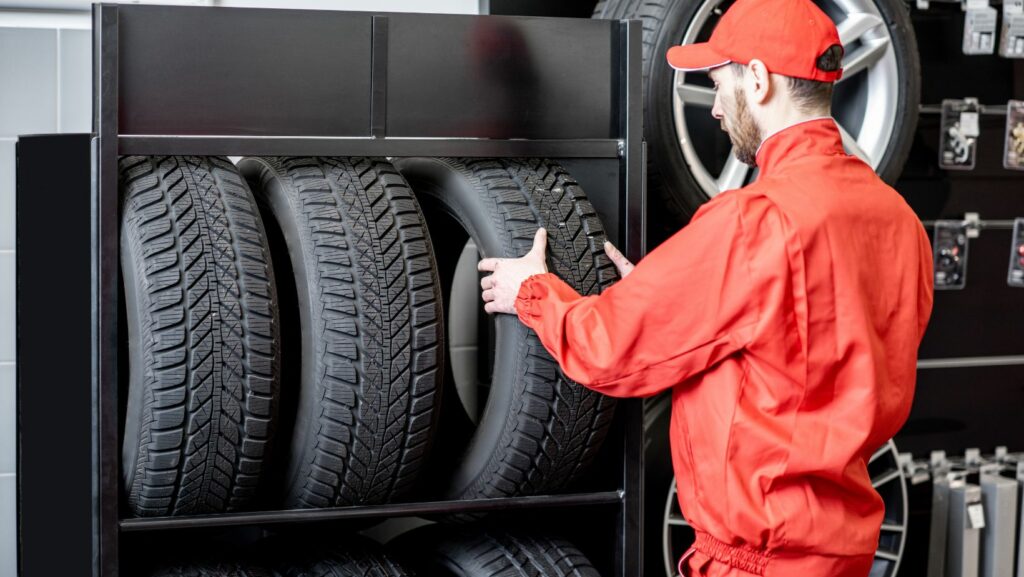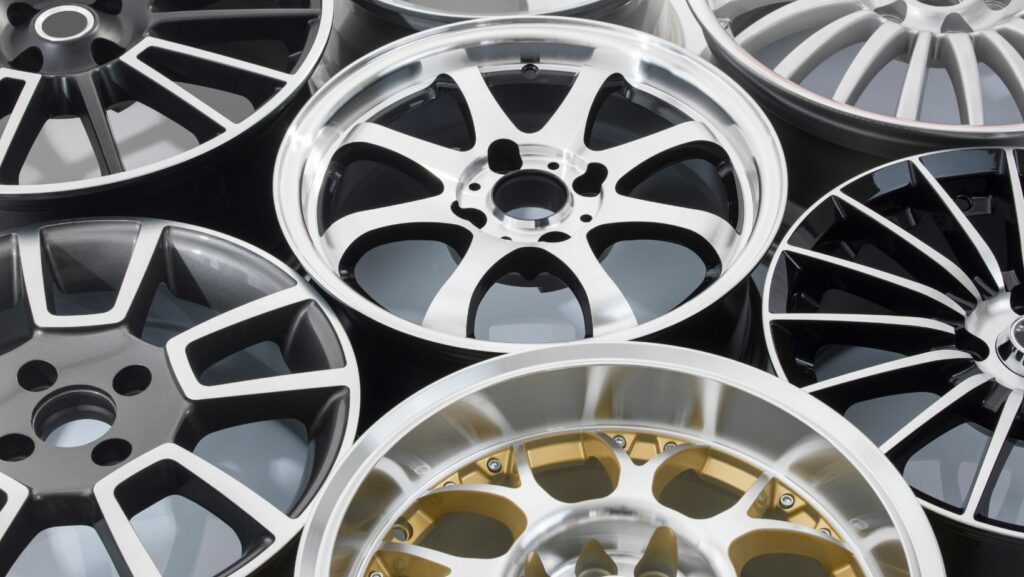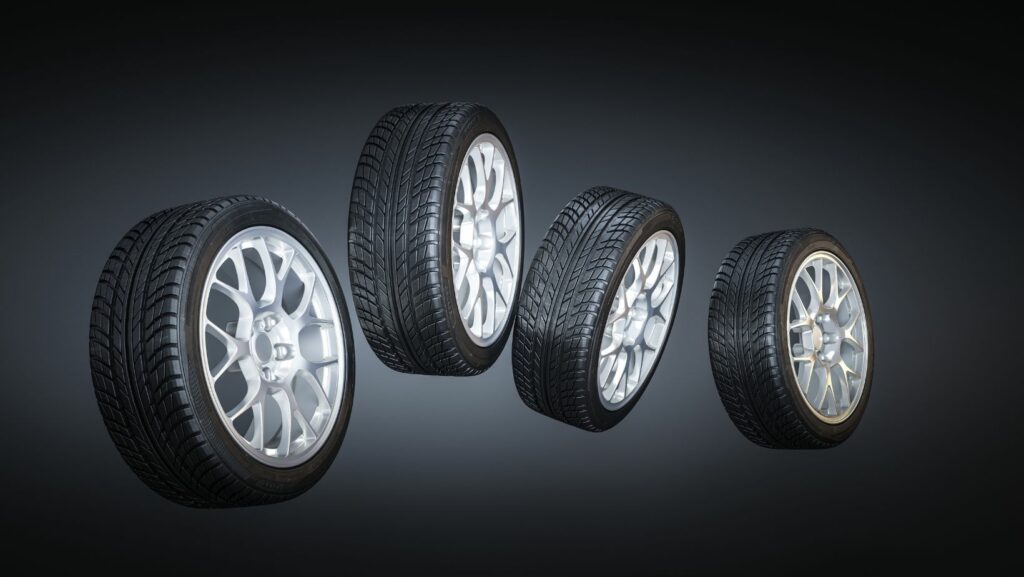In the world of automotive enthusiasts, the phrase “rolling tires and wheels” carries a special resonance. It’s not just about the physical act of a tire spinning on its axis, but a deeper understanding of how this simple motion is the foundation of every journey we undertake.
Rolling Tires and Wheels
Diving deep into the roots of automotive advancement, the evolution of rolling tires and wheels stands as an intriguing journey. The timeline intricately intertwines with human progress, marking milestones within transportation and industry.
Evolution From Ancient to Modern Times
 In early times, humanity’s ingenuity birthed the wheel’s crude concept, signifying a monumental advancement. A variety of materials: wood, stone, and then iron, lent their traits to the early wheels. Fast forward into the mid-19th century, Robert William Thomson filed a patent for the first pneumatic tire – a distinct predecessor of present-day models.
In early times, humanity’s ingenuity birthed the wheel’s crude concept, signifying a monumental advancement. A variety of materials: wood, stone, and then iron, lent their traits to the early wheels. Fast forward into the mid-19th century, Robert William Thomson filed a patent for the first pneumatic tire – a distinct predecessor of present-day models.
Progress continued, and in 1888, John Dunlop’s improved design saw adoption in bicycles, setting the precursor for automobile tires. Today’s modern tires possess a unique combination of natural and synthetic rubber, fabric, wire, and other chemical compounds, offering an optimized balance between comfort, efficiency, and safety.
Impact on Transportation and Industry
Tires and wheels, dual embodiments of ancient innovation and modern engineering, have undoubtedly revolutionized transportation and industry sectors. Revolutionizing personal mobility, they’ve facilitated the movement of goods, people, and services across vast distances. Industrial application broadened, with the advent of specialized tires for heavy machinery, fostering expedited workflows in construction, mining, and agriculture.
Types of Rolling Tires and Wheels
Advancing from the historical evolution of tires and wheels, we delve into the different types available today.
Tires for Various Vehicles
Diversified across multiple motor vehicles, tires differ in design, size, and make. For instance, passenger car tires, such as sedans, typically possess a balanced blend of comfort, fuel efficiency, and favorable road grip. High-performance vehicles, like sports cars, require tires with enhanced traction and speed ratings, eliminating the risk of tire disintegration at high speeds.
Wheel Design and Materials
Transcending from primitive wooden wheels, modern wheel designs leverage a variety of materials to fit distinct vehicle types and driving conditions. Today, wheels are made from steel, alloy, or magnesium (mag wheels).
 Steel wheels, robust and cheap, resist impact damage, making them ideal for arduous conditions, such as off-road driving. Alloy wheels, made from an aluminum or magnesium blend, weigh less, enhancing vehicle performance and fuel economy.
Steel wheels, robust and cheap, resist impact damage, making them ideal for arduous conditions, such as off-road driving. Alloy wheels, made from an aluminum or magnesium blend, weigh less, enhancing vehicle performance and fuel economy.
These wheels also have better heat dissipation characteristics, benefiting vehicles with high-performance braking systems. The rare, costly magnesium wheels present the lightest option and are commonly seen in racing vehicles due to their weight reduction and heat dissipation properties.
Innovations in Tire Technology
Transitioning from historical roots and types of tires in vehicles, we now look at innovations in tire technology, particularly focusing on advancements in durability, safety, and sustainability.
Advancements in Durability and Safety
In recent years, tire manufacturers have been integrating new technologies and materials to strengthen durability and safety. For example, the use of aramid fibers – the stuff that bulletproof vests are made of – adds to the strength and resilience of a tire. Bridgestone’s run-flat technology allows a tire to function for a short distance even after a puncture, providing motorists with the opportunity to reach a place of safety before replacing the tire.
Another innovation falling under this subheading is Continental’s ContiSense technology. It uses sensors embedded inside the tire to monitor tire pressures and temperature, transmitting real-time alerts to drivers when these metrics breach the safe limits.
Eco-Friendly and Sustainable Options
 With environmental consciousness on the rise, the tire industry has started to incorporate more sustainable practices and materials. Michelin’s Vision concept, a 3D-printed, airless, bio-sourced and biodegradable tire, exemplifies such eco-friendly endeavors.
With environmental consciousness on the rise, the tire industry has started to incorporate more sustainable practices and materials. Michelin’s Vision concept, a 3D-printed, airless, bio-sourced and biodegradable tire, exemplifies such eco-friendly endeavors.
Continental’s Taraxagum project also echoes sustainability. It’s an initiative to use dandelion latex as a raw material for tire production, offering an eco-friendly alternative to traditional rubber. Furthermore, Goodyear’s Oxygene concept represents a futuristic model, with a tire that houses living moss in its sidewalls. This tire absorbs moisture from the road surface and converts it into oxygen via photosynthesis, contributing positively to reducing local air pollution.



